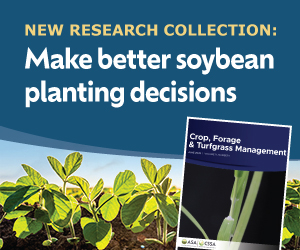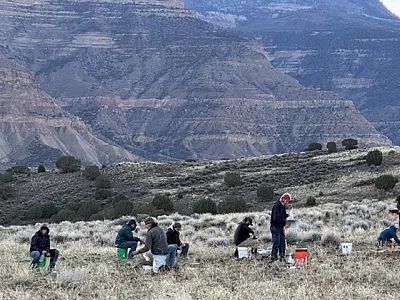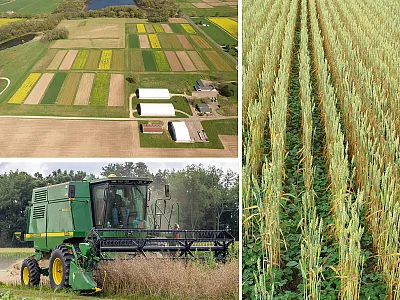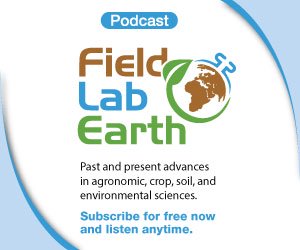Implementing Regenerative Practices on the Farm: It’s Complicated for Renters
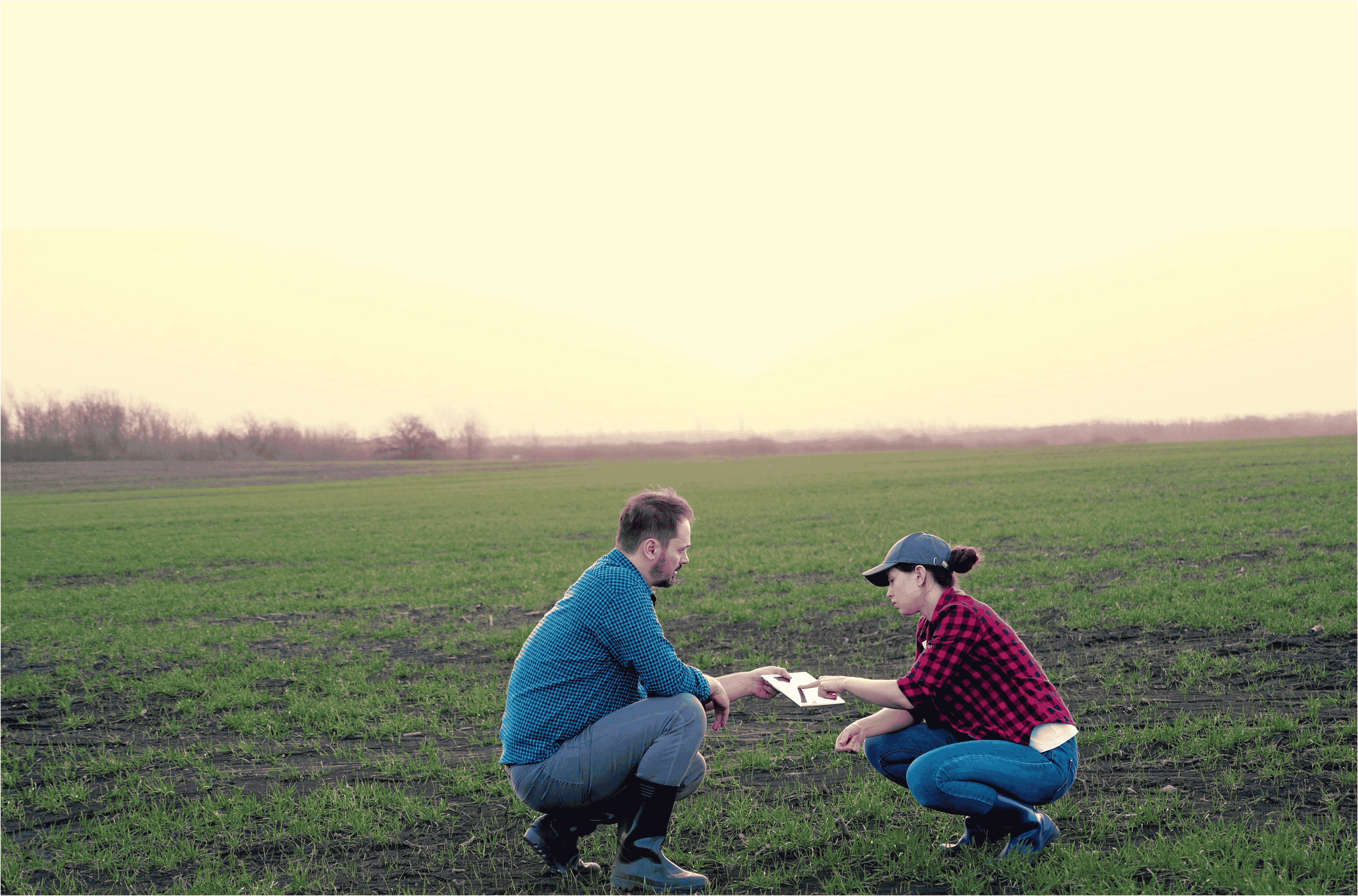

More and more farmers these days are putting regenerative practices into place on the land they own for the long-term sustainability of their operations. But what happens to farmland
that is rented out? Many of the practices behind regenerative agriculture like building soil
health and biodiversity and limiting the need for external inputs, provide benefits that are seen over time and not necessarily year to year. Renters often lack the leverage with the land owner to put regenerative practices into action. Earn 1 CEU in Sustainability by reading this article and taking the quiz at https://web.sciencesocieties.org/Learning-Center/Courses.
More and more farmers these days are putting regenerative practices into place on the land they own for the long‐term sustainability of their operations. But what happens to farmland that is rented out? Many of the practices behind regenerative agriculture like building soil health and biodiversity and limiting the need for external inputs, provide benefits that are seen over time and not necessarily year to year. Today, almost half of Canadian farmers rent their land, often from multiple owners.
John Kolk is one of those farmers. Raised in a farming family, Kolk works a section of the Palliser triangle, a semi‐arid section of western Canada, where he grows canola, dry beans, mustard, flax, wheat, barley, and corn on about 4,000 acres.
“I love farming. It’s fun,” Kolk says. “I love . . . building [the land] up and improving the soil and seeing those crops grow.”
Kolk’s rented acreage has fluctuated over the years, but he can attest to the challenges renters face when trying to improve soil quality. According to Kolk, there is no consistent criteria that renters or landlords can use other than dollars generated by crop yield to assess the value of the land. Regenerative practices offer another approach. This management style adds value to the land by ensuring it remains healthy enough to feed an ever growing and hungry population.
Healing Through Regenerative Practices
Agriculture was revolutionized by the development of synthetic fertilizers, herbicides, fungicides, and pesticides in the mid‐20th century. These innovations have allowed farmers to maximize crop yields, providing numerous benefits including food and nutrition, clothing, shelter, livelihoods, and preservation of open space. These benefits, though, have come at a cost in the form degraded natural resources, including the soil.
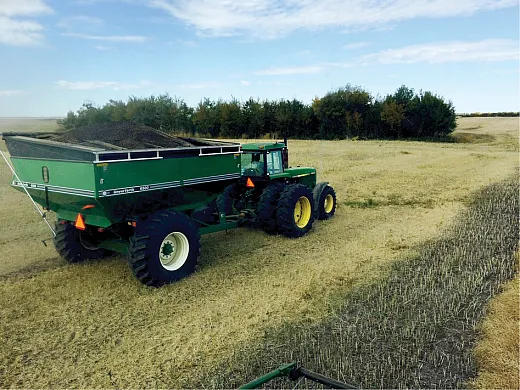
“We have addicted our soils to synthetic fertilizer and tillage for 100 years,” says Terry Buettner, an agronomy support manager with Ward Laboratories Inc. and fourth‐generation farmer who has worked land along the Platte River valley in Nebraska. “We need to do better.”
Decades of harsh agricultural practices have degraded the structure and nutritional content of the soil. It has also left the soil susceptible to erosion. While conservation efforts have been in place for decades, soil continues to be lost. According to the Soil Conservation Council of Canada, the country has lost 9.6 million acres of farmland in the 40‐year period between 1972 and 2011. Soil loss through erosion can rob the farm of future cultivation, costing Canada $3.1 billion annually.
Regenerative agricultural practices employ a holistic approach that pulls all of the components of agriculture together as an interconnected system. These practices can include many different techniques to address the needs of the soil to ensure the land and surrounding water systems improve. Regenerative practices may include, but are not limited to:
Reduced or no‐till practices—Reduced and no‐till practices improve soil structure, reduce erosion, increase soil carbon sequestration and water penetration, and allow for more diverse soil microbial communities to develop. These practices also reduce the need for annual inputs of fertilizer and lower the cost from tilling and supplemental irrigation.
Crop crops—Along with crop residue, cover crops provide the armor that protects soil from rainfall and wind erosion. Cover crop roots also hold the soil in place and prevent hardpan, which limits drainage and plant growth, from developing. These plants also sequester atmospheric carbon dioxide into soil organic carbon and stabilize nutrients to prevent runoff into nearby water systems. Studies show that this approach allows for the steady improvement in soil organic matter while maintaining increased yields without the need for additional fertilizer.
Cattle call—While soil manipulation for cultivation is disruptive, some soil movement is beneficial. Buettner is a proponent for integrating livestock into the mix of any farming practice to get “your soil firing on all cylinders.” He advocates for moving a small herd across the land in contained areas to graze on crop residues and cover crops. The animals convert high‐carbon residue into low‐carbon manure that can be spread evenly across the field. In addition, the hoof trampling stimulates the soil microbial communities.
While soil organic matter is often used as a proxy for soil health, it can take multiple regenerative approaches to restore organic matter to a healthy state. According to Buettner, soil organic matter typically only increases 0.1 percentage points a year. Kolk agrees, noting that he started with one plot of rented land that had a soil organic matter content at 1.4%. Over a decade of care, he was able to increase the value to 2.7%, which he considers a huge win. It is important to remember that these changes take time, perseverance, and patience. It also requires buy‐in from the land owner.
Evening the Score
Farmers have to juggle competing priorities—raising a crop, generating revenue, and protecting the environment. Land owners who actively farm their land typically maintain good land management practices, but as farmers age out of agriculture, their children often work outside of the industry. For this reason, many families are turning to renters to ensure their land continues to be worked. The longer land owners are removed from the land, the more their focus is drawn toward the bottom line and away from management practices that protect the soil and surrounding environment.
“I own farmland and saw firsthand the challenges that renters face when trying to manage land sustainably and yet have revenue comparable to their farm competitors,” says Barrie Manikel, PAg, a business development consultant with AgCall Inc. “We (Ag Call Inc.) are neutral ground and not a competitor.”
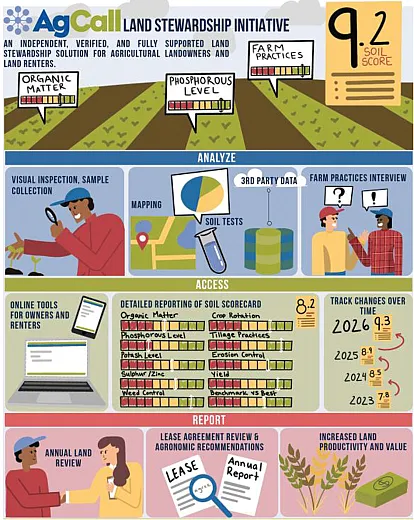
AgCall Inc., a company that works with farmers and ranchers to develop management solutions, initiated a survey to identify ways to help farmers who rent feel empowered to employ sustainable and regenerative practices on the land that they manage.
The survey sought input from farmers in Canada’s Prairie Provinces—Manitoba, Saskatchewan, and Alberta—where most farming in the country takes place. It sought information regarding how renters employ sustainable farming practices, such as crop and herbicide rotation, level of tillage, soil organic matter content, and preventing soil erosion.
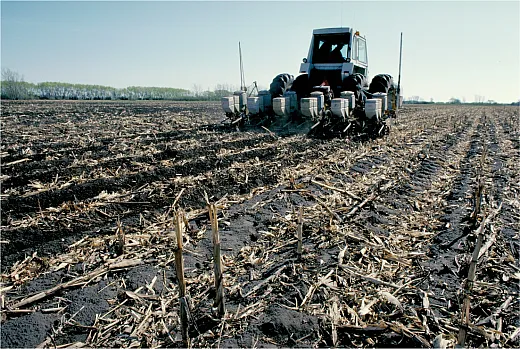
AgCall Inc. used the responses to develop a soil scorecard, which can be customized to represent specific tracts of land. It focuses on information that can be measured, like soil organic matter, nutrient concentration, and different management techniques. The scorecard provides a way to track and document changes in soil health following different sustainable and regenerative practices.
According to Manikel, the scorecard provides a way for the renter to begin a dialog with the land owner to ensure that they have the resources and, especially, a long‐term rental agreement in place to continue these practices.
“The one thing that came up time and time again is how often renters are scared about what would happen when the next generation takes control of their lease,” Manikel says. “It takes time to incorporate sustainable practices to build productivity and heal the land.”
“I own farmland and saw firsthand the challenges that renters face when trying to manage land sustainably and yet have revenue comparable to their farm competitors. ... It takes time to incorporate sustainable practices to build productivity and heal the land.”
A New Lease on Agriculture
Rental agreements vary from formal multi‐page itemized expectations to a handshake. This agreement is a relationship that forms between the land owner and farmer that often spans many years. For many renters, their lease is focused on dollars, but the length of the lease can be the biggest sticking point for the adoption of many sustainable and regenerative practices.
“Building soil health takes time and investment,” Kolk says. “Right now if you don’t have the long‐term contract, you only put in what is needed to pull the crop off, and you might be mining nutrients from the soil.”
According to Buettner, the number one thing needed to achieve sustainable and regenerative practices on rented land is landlord education. The landlord has to have a stake in the process and be willing to participate, which often translates into a willingness to enter into long‐term, often decades long, lease agreements. A long‐term lease allows renters the time they need to make the necessary changes to their practice, which might require purchasing different equipment or additional inputs, like cover crop seed, to bring the land back to a healthy state. It also helps if the landlord participates by covering some of the additional costs needed to put the practices into action.
Farming is a business, but it is a business that leads with love—a love for the land, a love for family, and a love for society. Regenerative practices that sustain the environment may take time, but their adoption will lean toward the long‐term viability of the land. Organizations or individual farmers can use the soil scorecard or a similar method to benchmark and track changes in soil properties. It is also a way to show the value of management practices. Many farmers who follow regenerative practices are taking this concept to next level. They are installing low‐cost sensors onto their equipment, so they can monitor different soil properties and using this data to map changes in soil properties over large swaths of land from one year to the next. With farmers and landlords working together, the final component to this puzzle is the consumer.
“Building soil health takes time and investment. Right now if you don’t have the long-term contract, you only put in what is needed to pull the crop off, and you might be mining nutrients from the soil.”
Adding Consumers to the Mix
Buettner hopes that one day there could be a direct financial benefit for adopting the regenerative practices on the farm. He believes there is an untapped market for food produced with these techniques, similar to the premium consumers pay for organic goods. The first step is an education campaign to help consumers understand how their food is grown and the benefit of these practices. This may take time.
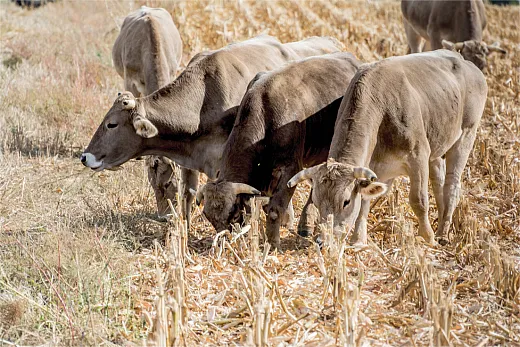
International Food Information Council released the results of a recent survey that asked 1,000 respondents about regenerative farming practices. It found that only one‐tenth of the respondents were aware of this management approach. For most people working in agriculture, this result is probably not a big surprise. Despite decades of education campaigns, the general public still remains fairly ignorant as how food found in the grocery store is grown. The survey did show that a majority of respondents are interested in learning more about the benefits of regenerative farming practices, but only one‐third expressed a willingness to pay more for food grown this way.
“We have to do a better job of showing what we are doing,” Kolk says. “Consumers want to be reassured that we are doing the right thing. A trust that is verifiable.”
Despite this poor showing with consumers, new labels touting the benefits of regenerative management practices are starting to pop up in the market place. The Regenerative Organic Certified label is an addition to the USDA Organic label that recognizes farms that address environmental quality, animal welfare, and worker welfare. The Land to Market Verified Regenerative label is designed to indicate food produced on farms that use management practices designed to increase soil health and biodiversity on pasture. A Certified Regenerative label indicates products were grown or raised on a farm using regenerative practices that upholds specific guidelines for environmental, social, and animal welfare, including detailed accounting for greenhouse gas emissions. How the labels will play into adoption of this concept and purchase of food raised in this manner by the general public remains unclear.
In the end, how the land is managed is also about pride.
“Whenever that land owner comes to you at the end of the season and says, ‘hey that was pretty amazing what you did out there,’ it makes a huge difference,” says CCA Jaron Bye, a land owner and landlord in western Canada. “We want to make sure we left [the land] the way we found it, if not quite a bit better.”
Self-Study CEU Quiz
Earn 1 CEU in Sustainbility by taking the quiz for the article at https://web.sciencesocieties.org/Learning-Center/Courses. For your convenience, the quiz is printed below. The CEU can be purchased individually, or you can access as part of your Online Classroom Subscription.
- How many Canadian farmers rent their land?
- Less than a quarter.
- One-third.
- Almost half.
- Seven out of 10.
- How many acres of Canadian farmland was lost between 1972 and 2011?
- 4.9 million.
- 9.6 million.
- 13.4 million.
- 17.2 million.
- As soil gets washed away, so do farm profits. How much is soil loss through erosion calculated to cost Canada annually?
- $357 million.
- $537 million.
- $3.1 billion.
- $13.3 billion.
- Regenerative agriculture pulls all the components of agriculture together in an interconnected system.
- True.
- False.
- Regenerative practices can improve soil organic carbon, a measure of soil health. How much of an improvement is realistic to expect annually when farmers implement these practices?
- 1%.
- 0.1 percentage points.
- 0.1%.
- 10 percentage points.
- Conversations between farm owners and farm renters about regenerative practices can be tricky. Special tools that track the effects of practices can help renters in their dialogues with owners. One such tool mentioned in the story is:
- A soil score card.
- A messaging app customized for agriculture.
- Drone-assisted imaging.
- None of the above.
- This story mentions several benefits of establishing long relationships between landlord and tenant. Which of the following is NOT mentioned as a benefit?
- Regenerative practices become evident to the landlord.
- Landowners may be more likely to help finance regenerative practices.
- Landowners will be more likely to eventually sell land to the renters.
- A tenant has more time to reap the longer-term benefits of regenerative practices.
- Appreciation among the general public for regenerative agriculture could help advance these practices. According to a recent survey, what percentage of respondents were aware of this management approach?
- 10%.
- 20%.
- 30%.
- 40%.
- Several food labels have been adopted to help raise awareness of regenerative practices. Which of the following is NOT an actual label?
- The Regenerative Organic Certified label.
- The Safe and Sustainable Food label.
- The Land to Market Verified Regenerative label.
- A Certified Regenerative label.
- One expert quoted in the story advises that there is no place for integrating livestock and crops in regenerative farming.
- True.
- False.
Text © . The authors. CC BY-NC-ND 4.0. Except where otherwise noted, images are subject to copyright. Any reuse without express permission from the copyright owner is prohibited.



